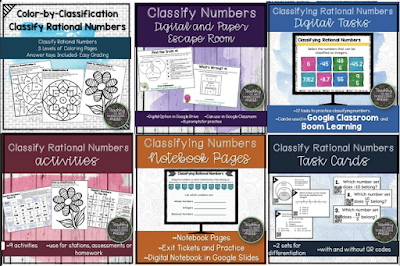How to Teach Classifying Rational Numbers?
I love teaching classifying rational numbers. I don’t know why I like it so much but I think part of the reason is that the students already know pieces of this lesson and I am just helping them connect things they’ve learned in math previously to this new skill.
The best math lessons are the ones were students make connections to something they have learned before. Research shows that when students are able to make connections to things that they already know, then those new topics stick in their brain better.
This set of classifying rational number lessons has students use number lines and come up with their own definition of things like whole numbers, which they have been using since kindergarten.
This lesson plan was originally written to be used within a classroom that uses small groups. So you will see four days of lessons that should take 15 to 20 minutes each and then the teacher would pull small groups for intervention or extra practice on this topic. However, you could also condense the lesson into 2 to 3 days depending on the length of your class period.
You can download the set of lessons here for free. The lesson plans are editable and there is also a set of activities that go with the lesson plans.
How to Practice Classifying Rational Numbers?
If you would like more ways to practice classifying rational numbers, I have tons of resources in my TPT store. I would use these additional resources for extra practice throughout the year, for homework, for substitute lesson plans, or for stations in a small group math classroom.




